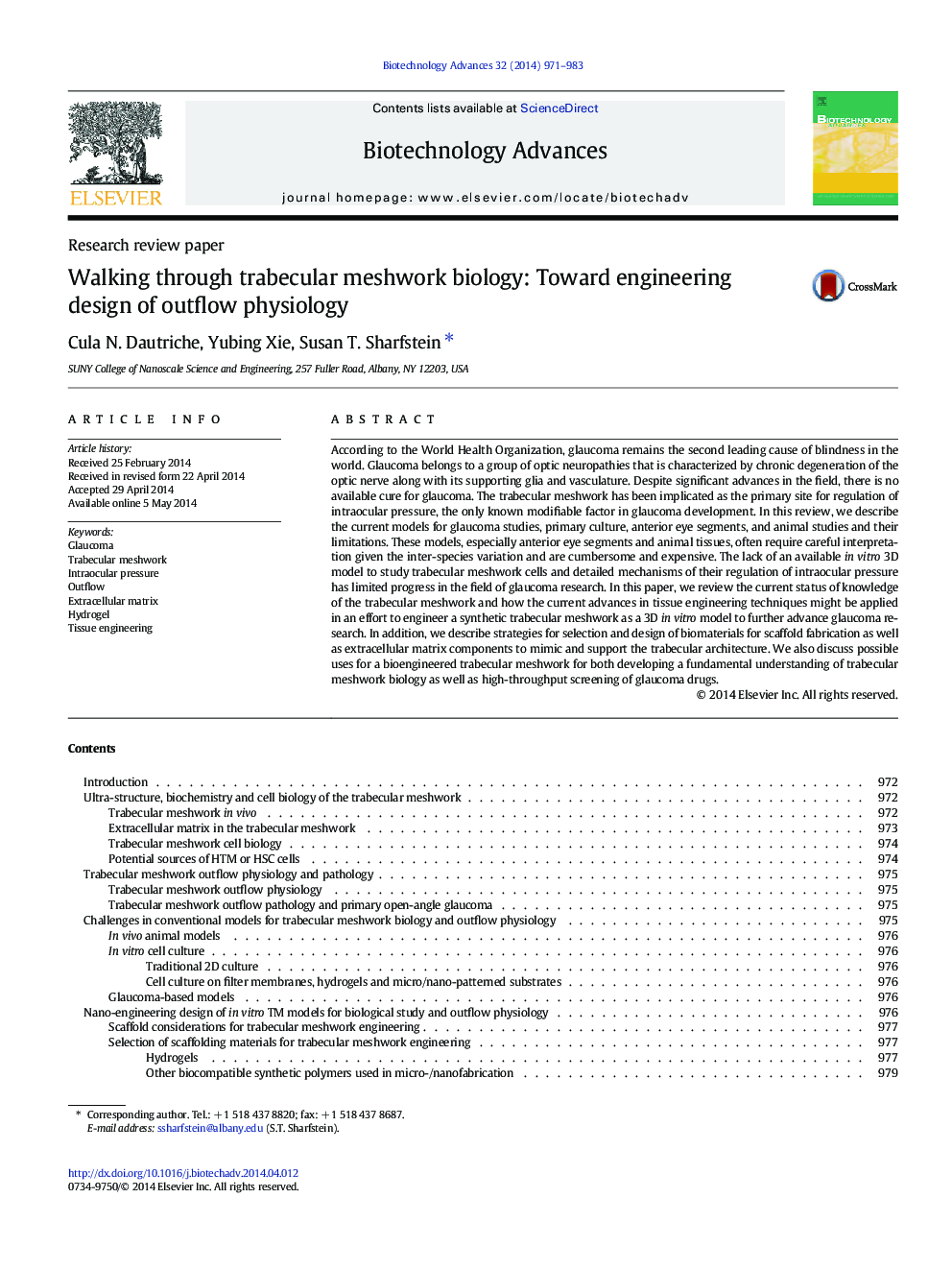| Article ID | Journal | Published Year | Pages | File Type |
|---|---|---|---|---|
| 14299 | Biotechnology Advances | 2014 | 13 Pages |
According to the World Health Organization, glaucoma remains the second leading cause of blindness in the world. Glaucoma belongs to a group of optic neuropathies that is characterized by chronic degeneration of the optic nerve along with its supporting glia and vasculature. Despite significant advances in the field, there is no available cure for glaucoma. The trabecular meshwork has been implicated as the primary site for regulation of intraocular pressure, the only known modifiable factor in glaucoma development. In this review, we describe the current models for glaucoma studies, primary culture, anterior eye segments, and animal studies and their limitations. These models, especially anterior eye segments and animal tissues, often require careful interpretation given the inter-species variation and are cumbersome and expensive. The lack of an available in vitro 3D model to study trabecular meshwork cells and detailed mechanisms of their regulation of intraocular pressure has limited progress in the field of glaucoma research. In this paper, we review the current status of knowledge of the trabecular meshwork and how the current advances in tissue engineering techniques might be applied in an effort to engineer a synthetic trabecular meshwork as a 3D in vitro model to further advance glaucoma research. In addition, we describe strategies for selection and design of biomaterials for scaffold fabrication as well as extracellular matrix components to mimic and support the trabecular architecture. We also discuss possible uses for a bioengineered trabecular meshwork for both developing a fundamental understanding of trabecular meshwork biology as well as high-throughput screening of glaucoma drugs.
